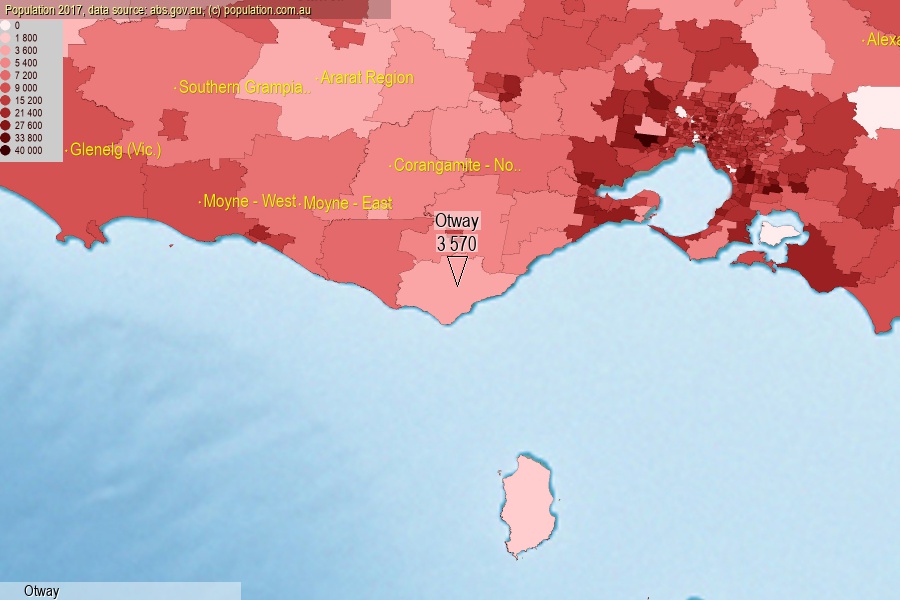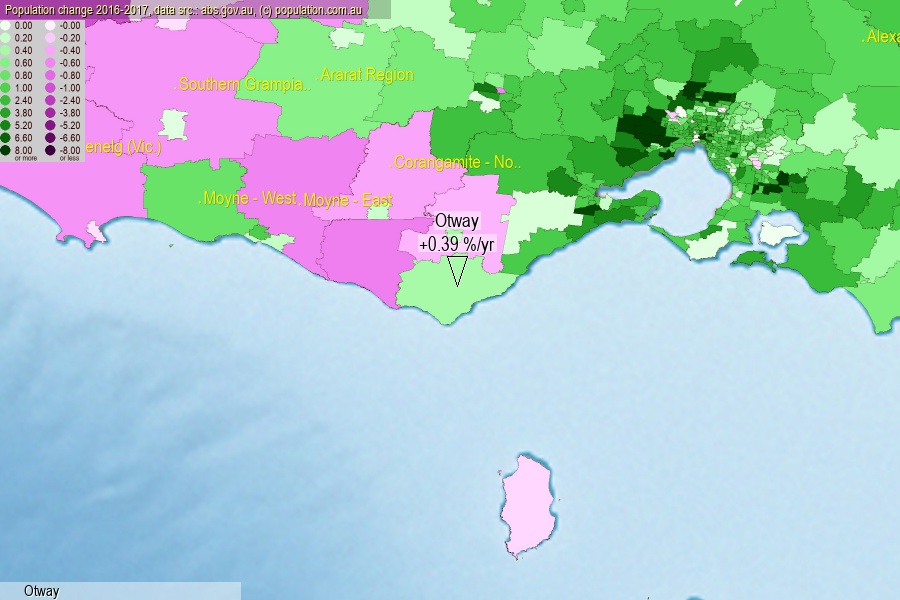 population.com.au
population.com.auLast official estimated population of Otway (as Statistical Area Level 2) was 3 570 people (on 2017-06-30)[2]. This was 0.01% of total Australian population and 0.056% of VIC population. Area of Otway is 1 505.90 km², in this year population density was 2.37 p/km² . If population growth rate would be same as in period 2016-2017 (+0.39%/yr), Otway population in 2025 would be 3 684. [0]



Click to enlarge. Otway is located in the center of the images.
Population [people], population density [p./km²] and population change [%/year] [2]
View borders » (new window) [4]
[2001-2002] +0.78 %/Yr.
[2002-2003] +0.92 %/Yr.
[2003-2004] 0.00 %/Yr.
[2004-2005] -0.54 %/Yr.
[2005-2006] -0.95 %/Yr.
[2006-2007] +0.87 %/Yr.
[2007-2008] +0.34 %/Yr.
[2008-2009] -0.31 %/Yr.
[2009-2010] -0.86 %/Yr.
[2010-2011] -1.16 %/Yr.
[2011-2012] +1.05 %/Yr.
[2012-2013] +1.19 %/Yr.
[2013-2014] +0.63 %/Yr.
[2014-2015] +0.54 %/Yr.
[2015-2016] +0.51 %/Yr.
[2016-2017] +0.39 %/Yr.
[0] Calculated with linear interpolation from officially estimated population
[1] Read more about SA2 and Australian Statistical Geography Standard (ASGS) on abs.gov.au
[2] Population data from Australian Bureau of Statistics (Population and density: 2017; change: 2016-2017)
[3] Digital Boundaries: Australian Statistical Geography Standard (ASGS) 2016.
[4] Border coordinates are simplifyed using Ramer-Douglas-Peucker algorithm.